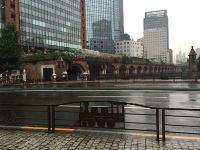Considering Complexity, Context and Culture in Contemporary Tokyo: Urban Systems | Urban Typologies | Urban Design

Tokyo is one of the planet’s largest, most complex, and most successful cities. Tokyo’s success is worth critical examination, not only to cull out reasons for achievement but also to better grasp facets of the city that contribute to its Gestalt. This research critically considers the vehicle of ‘urban typology.’
This work identifies/delineates unique typologies that define, shape, and characterize Tokyo’s rich fabric. Case studies embrace conventional awareness of typology while charting new ground in conceiving exceptionally Japanese types. Creative typologies include: Gate-Threshold; Spiritual Spark; Arcade Street; Optimize Leftovers; Extreme Parking; Koban; Palimpsest Remnants; Folded + Compressed; Thin Landscapes; Vending Ethos; and Love Zones.
The author invokes an existing holistic framework for design + planning to better illuminate compelling reasons for Tokyo’s ongoing progress despite intense pressures on economic, environmental, social, cultural, and spiritual fronts. Application of findings, beyond Tokyo, is postulated.
keywords: systems, holism, typologies, urban design, place-making


Add comment
Log in to post comments